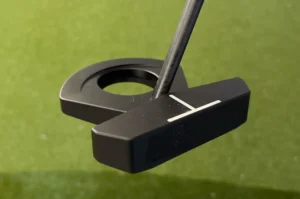Golf Ball Size Regulations
Golf balls come in a variety of constructions, from basic one-piece balls for beginners to multi-layer tour balls loaded with technology. But whether you’re playing a brand new Pro V1 or an old featherie you found, all golf balls used in competition must adhere to size and weight standards.
Understanding golf ball dimensions is key for both recreational and professional players. Proper sizing affects your ability to control distance and spin, as well as make putts accurately. It also ensures fairness across the field during tournaments.
This article will cover the complete regulations around golf ball size set by the United States Golf Association (USGA) and The Royal and Ancient Golf Club of St Andrews (R&A). You’ll learn about the evolution of the golf ball over history and how it led to the universal standards used today.
Overview of Key Golf Ball Size Specs
While we’ll dive into the history later, let’s first summarize the critical size specifications for a legal golf ball according to USGA Rule 5 and R&A Rule 5:
- Minimum Diameter – 1.68 inches, or 42.67 mm
- Maximum Weight – 1.620 ounces, or 45.93 grams
- Minimum Volume – 1.620 cubic inches, or 26.5 cc
- Maximum Distance – 317.46 yards, or 290 meters (when hit in test conditions)
The circumference of a golf ball meeting these standards works out to roughly 5.28 inches. We’ll explain later how these dimensions evolved over centuries of golf ball developments.
From Featheries to Rubber – Golf Ball History and Evolution
Golf originated in 15th century Scotland, where balls were made of wood or feathers stuffed into cowhide or horse leather pouches. These featherie golf balls were expensive, hard to make consistently, and susceptible to wear.
The next evolution was the “Gutta Percha” ball in 1848, made from the rubbery sap of Malaysian trees. They were more affordable and durable than featheries but still handmade.
In the early 1900s, Coburn Haskell innovated a rubber core wound with tight rubber bands and wrapped in Gutta Percha. This allowed for mass production and better consistency.
By the 1930s, the Haskell ball design progressed to rubber cores wound with synthetic thread and Surlyn or balata covers. Balata provided soft feel but was prone to scuffs. The introduction of Surlyn, an impact-resistant resin, improved durability.
In the late 1960s and 1970s, manufacturers began experimenting with solid cores and multiple layer constructions to enhance performance. This advanced ball technology continues today.
Standardization of Golf Ball Size
As golf ball technology rapidly advanced in the 20th century, the USGA and R&A realized a need to regulate specifications to maintain fairness and control performance.
In 1921, the USGA set a 1.68 inch diameter minimum but allowed up to 1.62 ounces in weight. The R&A permitted smaller 1.62 inch balls up to 1.62 ounces. This caused issues when American and British golfers competed, as the smaller “British” balls flew shorter distances.
By 1974, the governing bodies compromised on the current worldwide standard ball size of at least 1.68 inches and up to 1.620 ounces. This enabled use of the same balls across countries and tours.
Further modifications were made in 1976 to limit overall distance through testing, forcing manufacturers to dial back ball flight while still innovating materials.
Current Golf Ball Size Regulations
Now that we’ve covered the origins of the universal golf ball size, let’s break down the specific dimensions, weights, and limits in more detail:
- Minimum Diameter – All golf balls must be at least 1.68 inches in diameter, or 42.67 mm.
- Maximum Weight – 1.620 ounces or 45.93 grams is the upper limit for golf ball weight under the rules.
- Minimum Volume – In conjunction with the size and weight limits, golf balls must have a minimum volume of at least 1.620 cubic inches or 26.5 cc.
- Circumference/Metric Conversions – Based on the regulations above, you can calculate a legal golf ball’s circumference as roughly 5.28 inches or 134 mm.
Dimple Requirements
The dimples on a golf ball surface are necessary for proper aerodynamics. By regulating dimple specifications, the rules prevent balls that fly too far.
Modern golf balls have between 300 and 500 dimples. The depth, size, and pattern have to be symmetrical between hemispheres. There are also minimum and maximum dimple quantities the USGA tests for during approval.
Layers
Over history, golf balls have gone from single-piece versions to multi-layer spheres designed for tour performance. The rules do not dictate how many layers a ball may have or the materials used internally. This enables ongoing innovation in construction and technology to achieve desired compression, spin rates, and launch angles.
Non-Conforming Golf Balls
Given the desire for maximized distance, some manufacturers produce non-conforming golf balls that don’t adhere strictly to USGA regulations. These are primarily aimed at the amateur market.
While appealing for their promise of extra yards, these balls cannot be used in tournaments or for handicap purposes. Their performance under competitive conditions also isn’t proven.
Impact on Scoring and the Game
The USGA and R&A consider golf ball specifications critical for preserving shot values and the challenge of the game. Views are mixed on non-conforming balls, with supporters feeling they help amateurs lacking distance without harming fairness, while opponents argue they undermine the spirit of the game.
Optimizing ball size and weight has a notable impact on scoring capability. The standardized 1.68 inch modern golf ball represents over 600 years of innovation in the quest for the perfect sphere.
Key Takeaways
To summarize the key details around golf ball size regulations and history:
- The USGA and R&A compromise in 1974 established the universal golf ball diameter of 1.68 inches and maximum weight of 1.62 ounces.
- Balls evolved from handmade feather and leather versions to mass-produced wound rubber balls to multi-layer constructions.
- Standardizing size ensured fairness between British and American players competing together.
- Maximum distance testing reins in performance while enabling innovations in materials like Surlyn.
- Non-conforming balls exist but aren’t rules compliant, often stretching limits on size and weight.
For over 600 years, the golf ball has seen dramatic changes in construction and technology. But the standardized weight and 1.68 inch diameter represent a universal constant in the game. Without these regulations, fairness and challenge on the course would suffer.
So whether you play the latest Pro V1, a classic balata wound ball, or dig up an ancient featherie, you can be confident it meets golf’s stringent size requirements in the quest for the perfect sphere.








